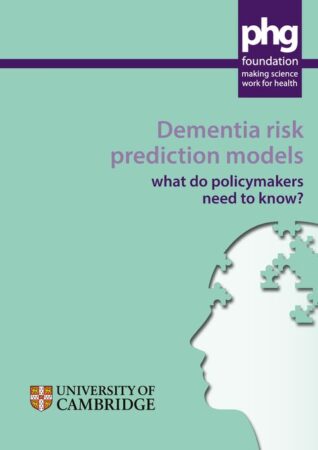Home Publications Reports Dementia risk prediction models
Dementia risk prediction models
Current UK policies promote early diagnosis of dementia among people with symptoms of the condition, but do not support either screening or prediction of future dementia risk among apparently healthy individuals. With population growth and ageing, the number of people living with dementia worldwide is projected to rise rapidly over the coming decades, despite a decline in age-specific incidence rates of dementia in high-income countries.
This report focuses on dementia risk prediction as a tool to prevent future onset of the disease, although some of the issues associated with future risk prediction also apply to early detection. It provides an overview of current dementia risk prediction tools along with their uses and validity in different settings and populations.
Using a combination of literature review and informant interviews, the report describes the key issues and challenges around dementia risk prediction for policymakers, including identifying potential benefits, harms and uncertainties. It also outlines the research needed to enhance the utility of approaches to dementia risk prediction at population level.
Summary of findings
- More than 70 models aiming to predict future dementia risk have been developed in research settings, but most have uncertain validity for predicting dementia across different populations, age groups and timescales.
- A major gap was a lack of effective interventions to offer people identified by these models as being at high dementia risk.
- There were also uncertainties about how best to communicate risk to the public; the value of communicating a high risk status to individuals when there is little evidence that it would alter clinical outcomes; and a variety of ethical, legal and social issues
- There is concern about the opportunity costs of implementing dementia risk prediction and the potential effect on overstretched health systems.
By Charlotte Warren-Gash

